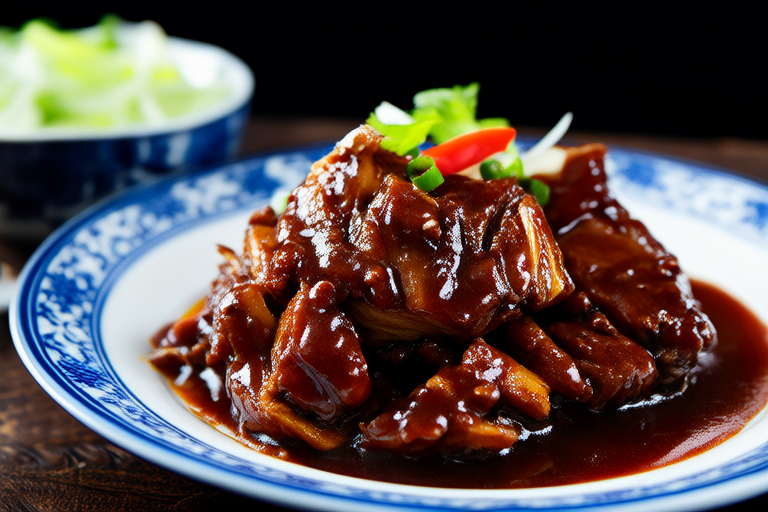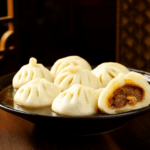Classic Shandong Braised Beef
Welcome to my blog, where we explore the rich culinary traditions of Shandong cuisine. Today, we’re diving into one of the most iconic dishes from this region: Classic Shandong Braised Beef. This dish is not only a testament to the artistry and precision of Shandong cooking but also a delicious way to savor the robust flavors that have made this cuisine beloved for centuries.
The Origins of Shandong Cuisine
Shandong cuisine, also known as Lu cuisine, has a long history dating back over 3,000 years. It is one of the eight major cuisines of China and is renowned for its emphasis on fresh ingredients, light seasoning, and meticulous preparation techniques. The coastal location of Shandong provides an abundance of seafood, while its fertile plains offer a variety of vegetables and meats, including beef. The braising technique, which is central to this dish, is a hallmark of Shandong cooking, allowing for deep, complex flavors to develop slowly over time.
Ingredients
- Beef Brisket: 1 kg, preferably grass-fed for richer flavor.
- Shaoxing Wine: 2 tablespoons, a rice wine essential in Chinese cooking.
- Soy Sauce: 4 tablespoons, dark soy sauce for depth and color.
- Rock Sugar: 3 tablespoons, for sweetness and caramelization.
- Ginger: 6 slices, for aroma and heat.
- Garlic: 4 cloves, finely chopped.
- Scallions: 4-5, cut into segments for garnish.
- Star Anise: 2 pieces, for a subtle, aromatic flavor.
- Fennel Seeds: 1 teaspoon, adds warmth and complexity.
- Black Pepper: 1/2 teaspoon, freshly ground for a robust finish.
- Vegetable Oil: 2 tablespoons, for sautéing.
- Bone Broth or Water: 1 liter, for braising.
- Optional Ingredients: Green onions, sesame oil, and white vinegar for additional seasoning.
Preparation Steps
- Prepare the Beef: Start by selecting a high-quality piece of beef brisket. Trim any excess fat and cut it into large, uniform pieces. This ensures even cooking and better absorption of flavors during the braising process.
- Blanch the Beef: Bring a pot of water to a boil and add the beef pieces. Boil for about 5 minutes, then drain and rinse under cold water. This step removes impurities and toughens the meat’s surface, making it more flavorful when braised.
- Sauté Aromatics: In a large pot or wok, heat the vegetable oil over medium heat. Add the ginger slices, garlic, and star anise. Sauté until fragrant, about 2 minutes.
- Braise the Beef: Return the beef to the pot, along with the soy sauce, Shaoxing wine, rock sugar, fennel seeds, and black pepper. Pour in the bone broth or water, ensuring the liquid covers the beef. Bring to a simmer, then reduce the heat to low. Cover the pot and let it braise for approximately 2 hours, or until the beef is tender and falling apart. Stir occasionally to ensure even cooking.
- Adjust Seasoning: Once the beef is tender, taste the braising liquid and adjust the seasoning if necessary. You can add more soy sauce for saltiness, sugar for sweetness, or a splash of white vinegar for acidity.
- Final Touches: Remove the beef from the pot and set aside. Strain the braising liquid, discarding the solids. Pour the strained liquid back over the beef to coat evenly. Garnish with scallion segments and a drizzle of sesame oil for added aroma and flavor.
Cooking Techniques
The key to achieving the perfect Classic Shandong Braised Beef lies in the careful execution of several cooking techniques:
- Blanching: This step helps to clean the meat and tighten its texture, preventing it from becoming too soft during the braising process.
- Sautéing Aromatics: Properly sautéing the ginger, garlic, and spices infuses the braising liquid with a wealth of aromas and flavors.
- Braising: The slow, gentle simmer allows the beef to absorb all the flavors of the braising liquid, resulting in a deeply flavored and tender dish.
- Seasoning: Constantly tasting and adjusting the seasoning ensures that each bite is perfectly balanced.
Serving Suggestions
Classic Shandong Braised Beef pairs wonderfully with steamed rice or noodles. Its rich, savory flavors complement the mildness of these accompaniments, creating a harmonious dining experience. For a more substantial meal, serve it alongside stir-fried vegetables such as bok choy or broccoli. The dish can also be enjoyed cold, making it a versatile option for both hot and cold preparations.
Health Benefits
Beef, especially from grass-fed sources, is a great source of protein, iron, and B vitamins. The slow-cooking method used in this recipe makes the beef particularly tender and easy to digest. Additionally, the use of ginger and garlic adds anti-inflammatory properties, while the rock sugar and soy sauce provide natural sweetness and umami.
Conclusion
Classic Shandong Braised Beef is a dish that encapsulates the essence of Shandong cuisine: simplicity, balance, and depth of flavor. By following this recipe, you can recreate this beloved dish in your own kitchen and experience the rich culinary heritage of Shandong. Whether you’re a seasoned chef or a novice cook, this dish offers a rewarding challenge and a delicious reward. Enjoy your culinary journey!


